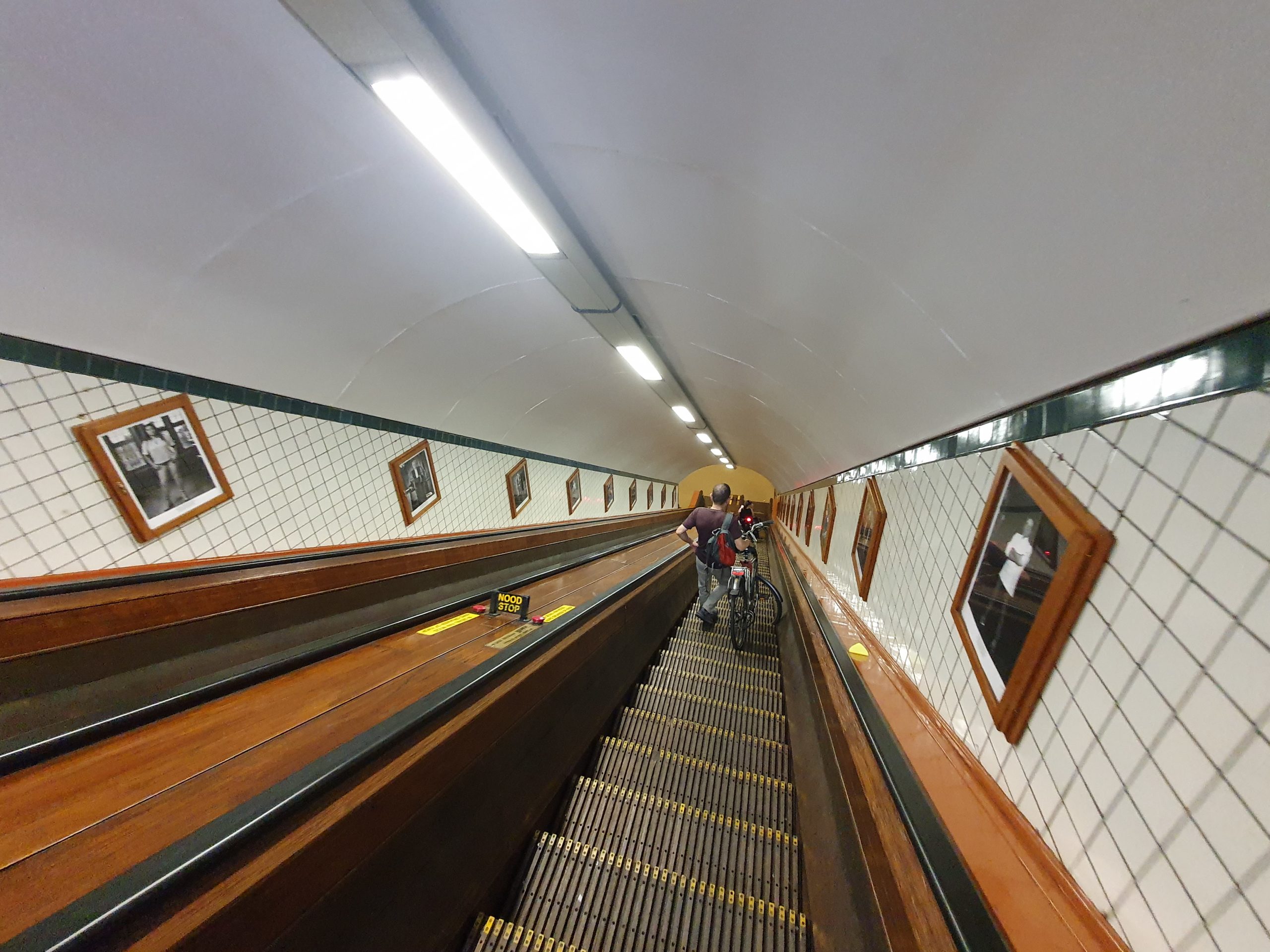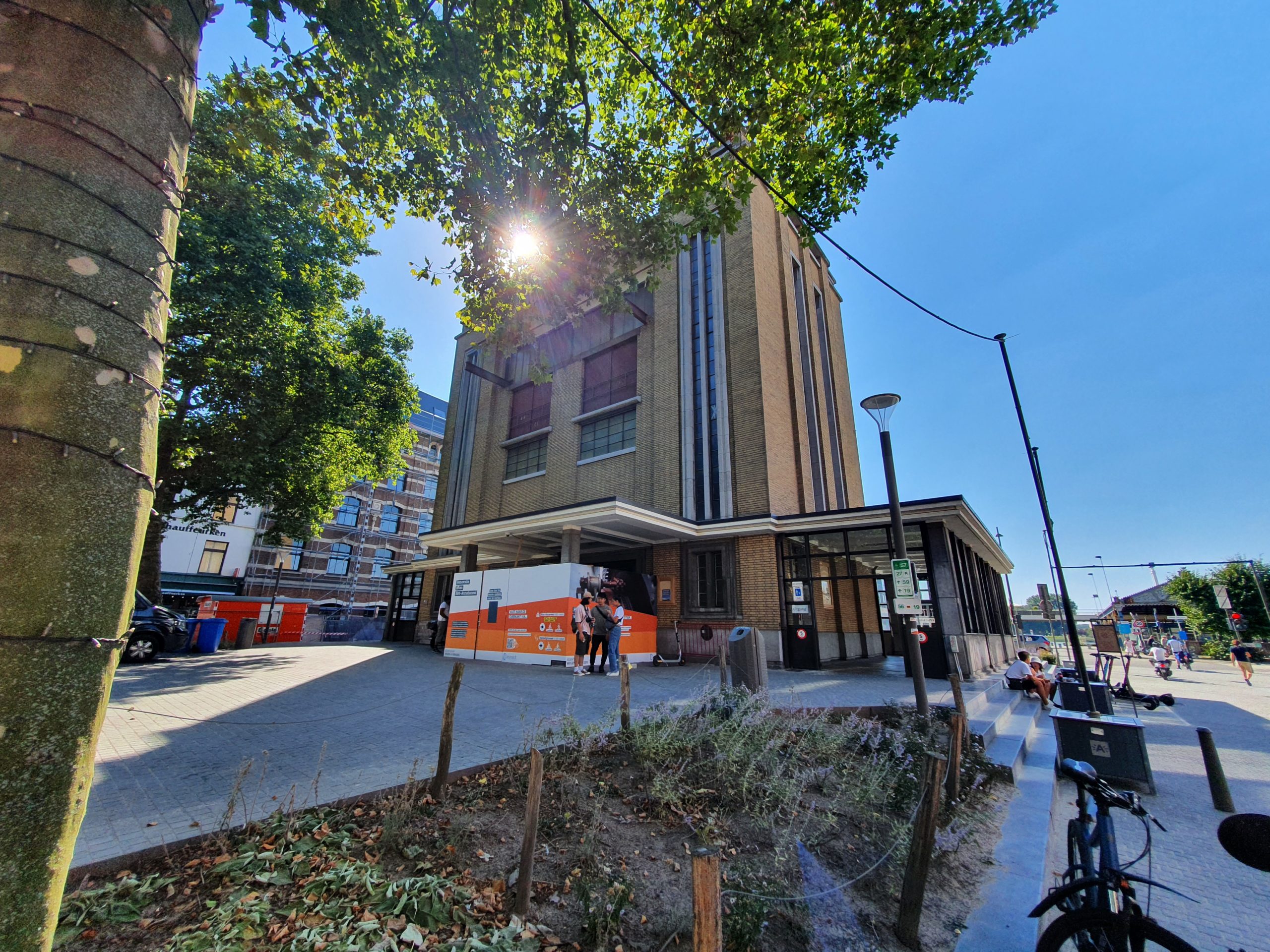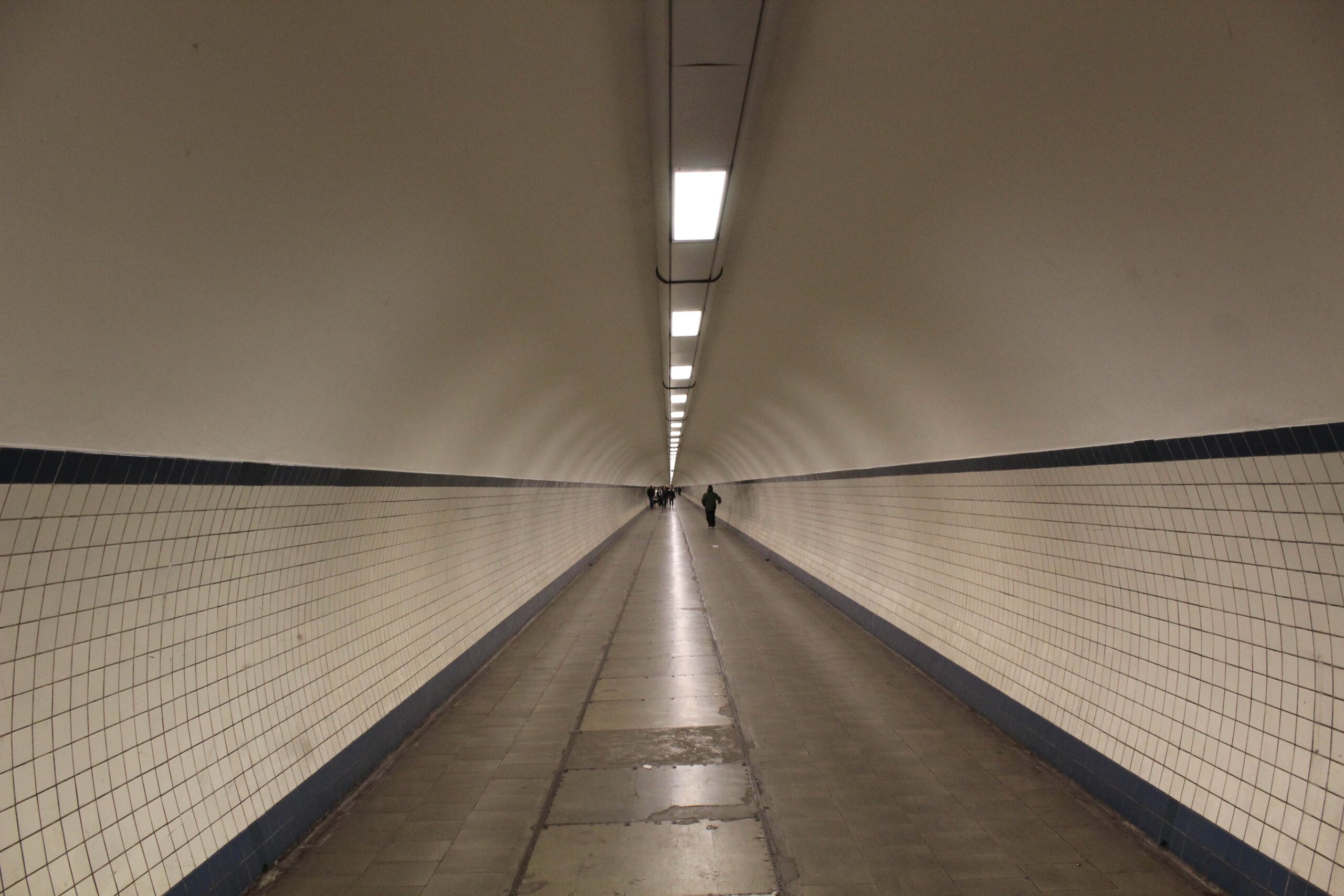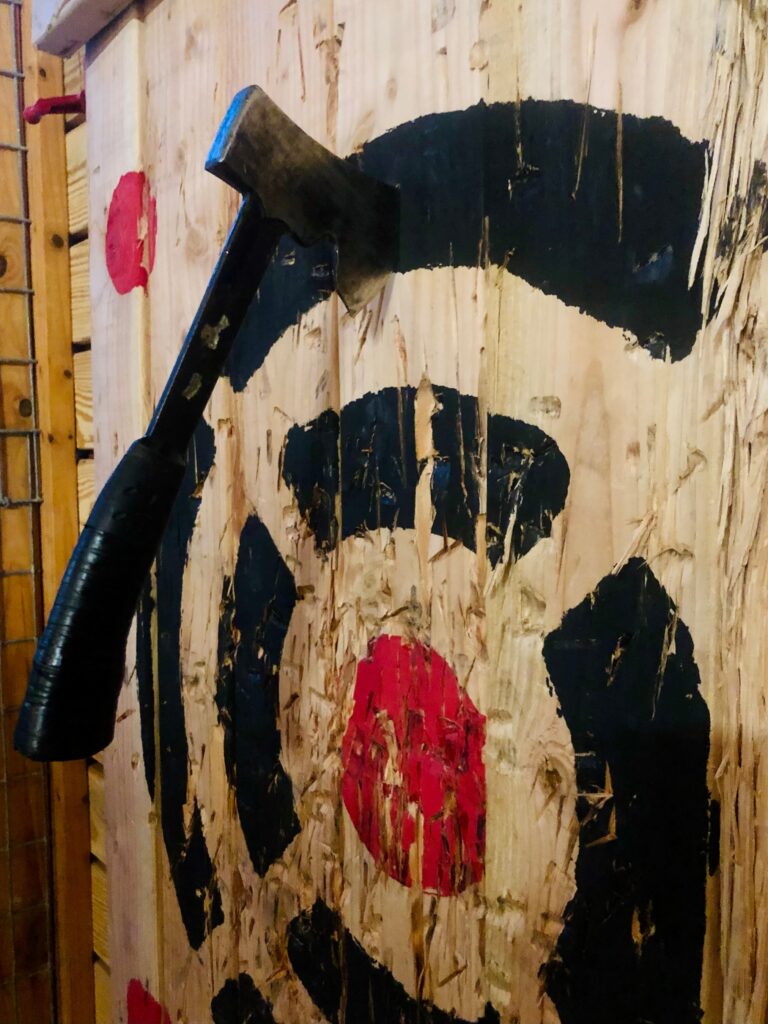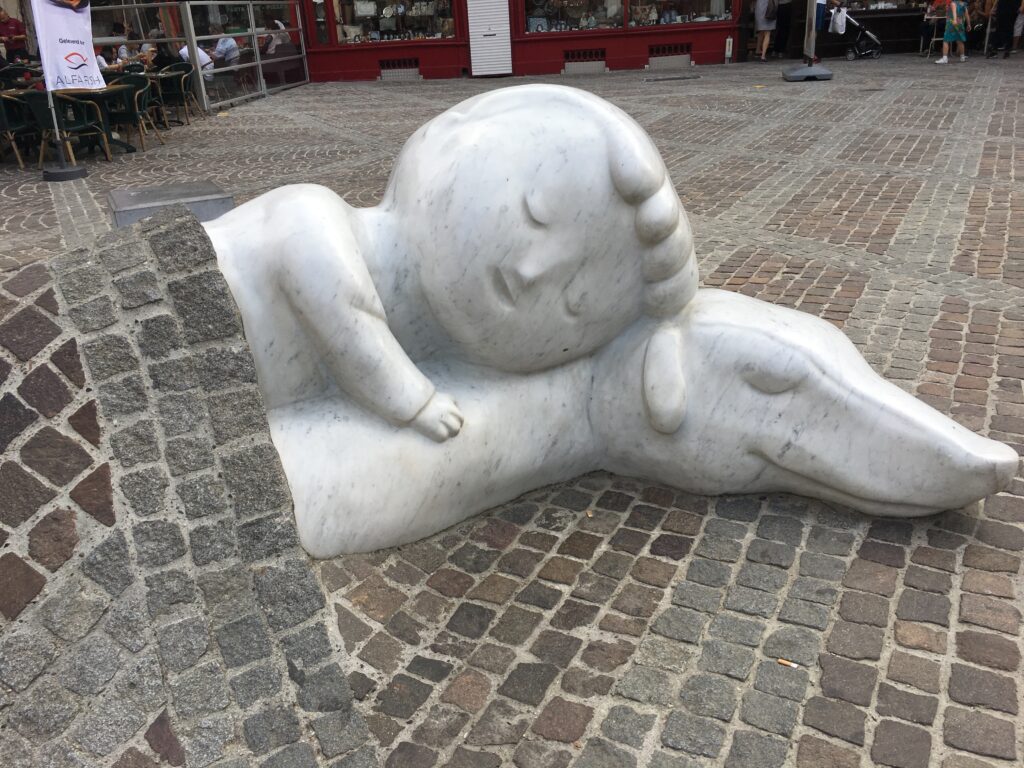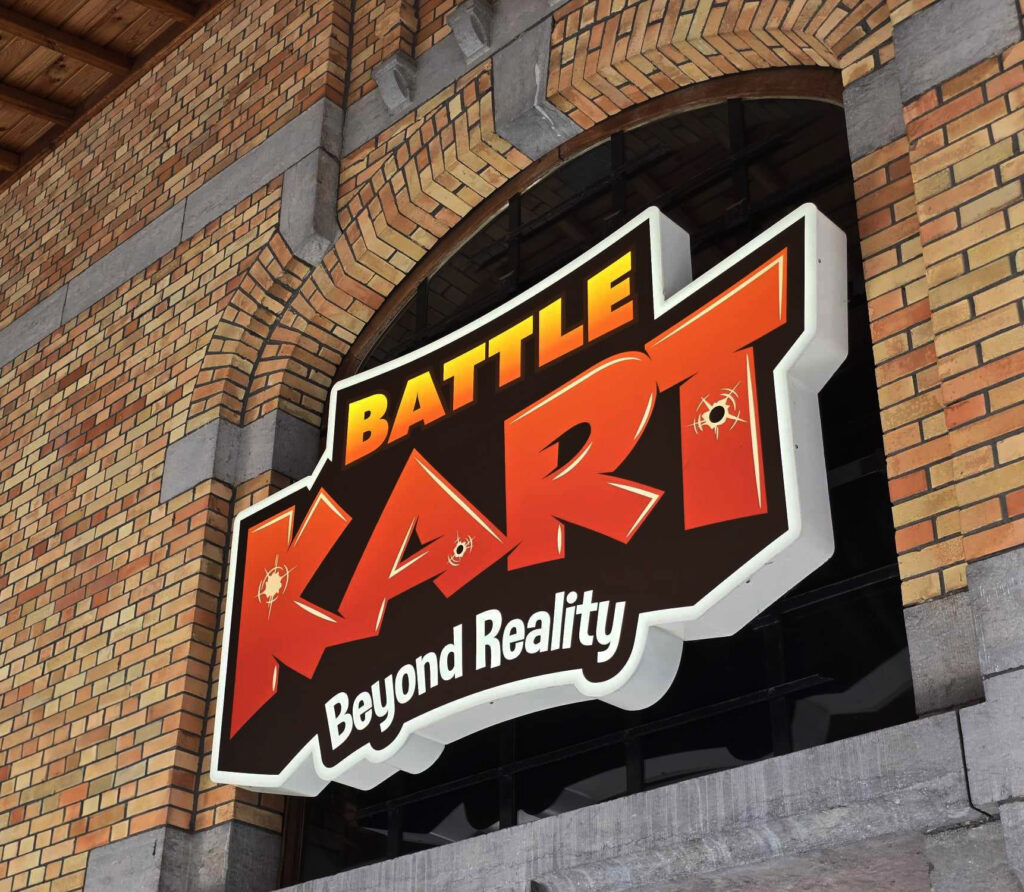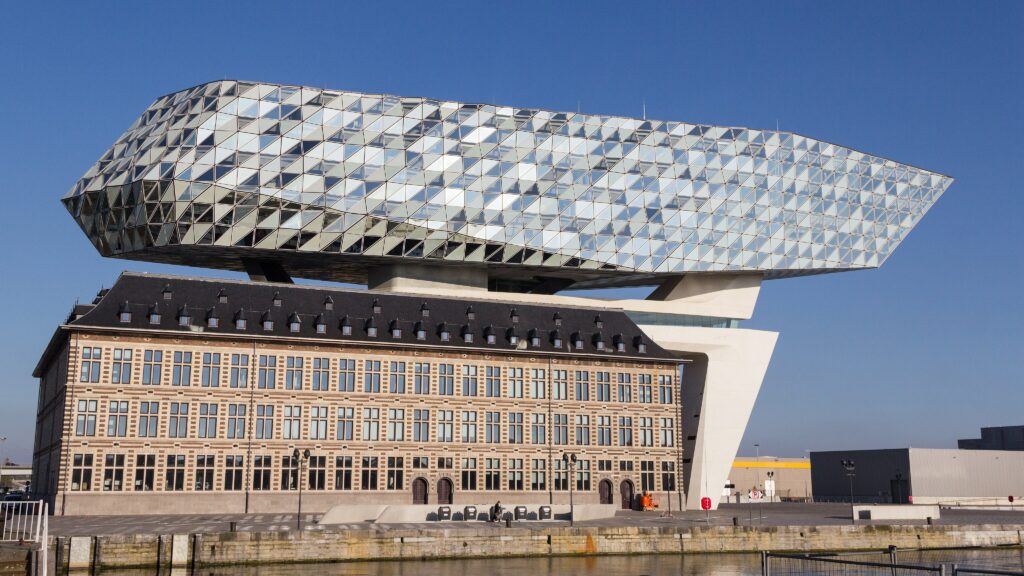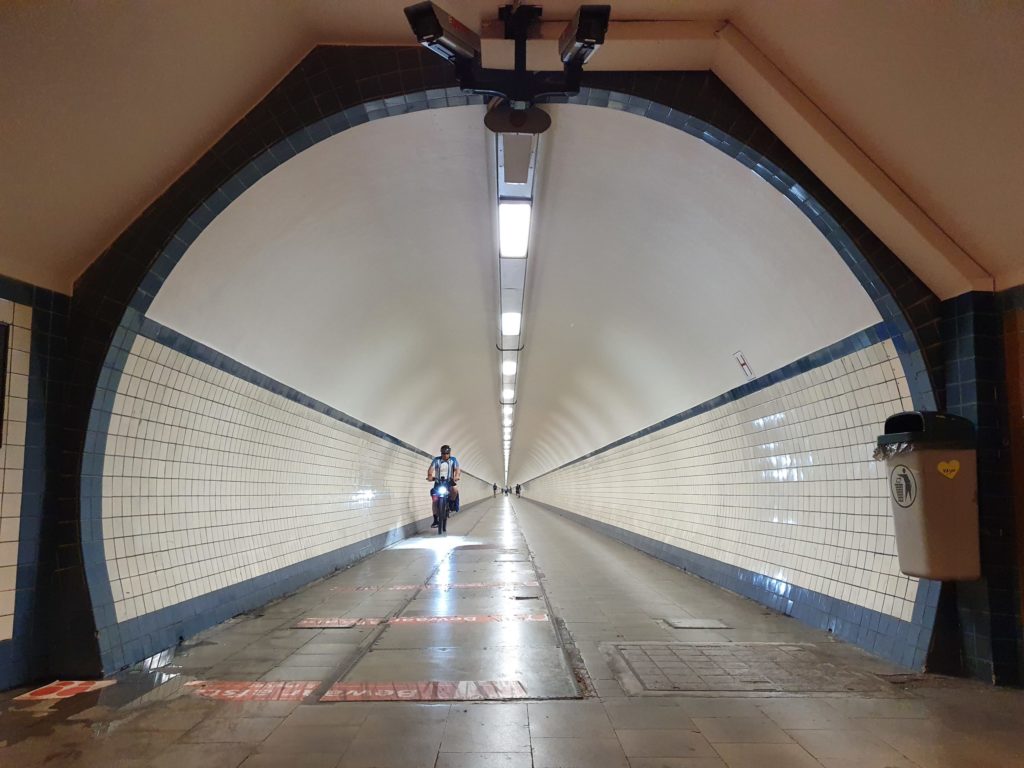
The Saint Anne pedestrian tunnel is a 572-meter-long underground passage reserved for pedestrians and cyclists, running beneath the Scheldt River. It is known for its white ceramic tiles, its seemingly endless length, and its vintage wooden escalators.
Galerie photos
Start of the experience
On the right bank of the Scheldt, the entrance to the tunnel is located in a yellow-brick building on Sint-Jansvliet square, which hosts a flea market on Sundays.
To enter the tunnel, visitors can choose between an elevator that can hold up to 40 people and a double escalator.
The escalator is especially appreciated by Art Deco enthusiasts, with its structure and edges made of painted wooden panels and its steps formed from thin wooden slats. During the descent, travellers are met with the loud noise of the machinery and ventilation systems that keep the tunnel aerated. The entrance walls are covered in ceramic tiles similar to those found in the Paris metro, and display posters of shows or exhibitions framed in wood.
Description of the tunnel
The tunnel is 572 meters long and has a diameter of 4.30 meters. Even though crossing it only takes a few minutes, it is still difficult to see the opposite end from one side.
Lit by neon lights that highlight the white tiles, the tunnel welcomes many people—alone, with family, or with friends—who sometimes meet acquaintances and strike up conversations during the crossing.
Joggers and cyclists also pass through the tunnel. Despite the speed limit signs, be careful: it’s not uncommon to be passed quite closely and quickly by them.
The tunnel today
The Saint Anne Tunnel in Antwerp continues to serve its original purpose: providing a pedestrian and cyclist passage beneath the Scheldt. It is particularly used during major events, such as sports celebrations or national festivities, when car access to the city center is restricted. The people of Antwerp are fond of their tunnel and take care of it—there is not a single graffiti mark, no damage, not even any litter inside.
The tunnel was restored in 1993 and listed as a historic monument in 1997. It has also served as a filming location for movies, music videos, and advertising posters.


